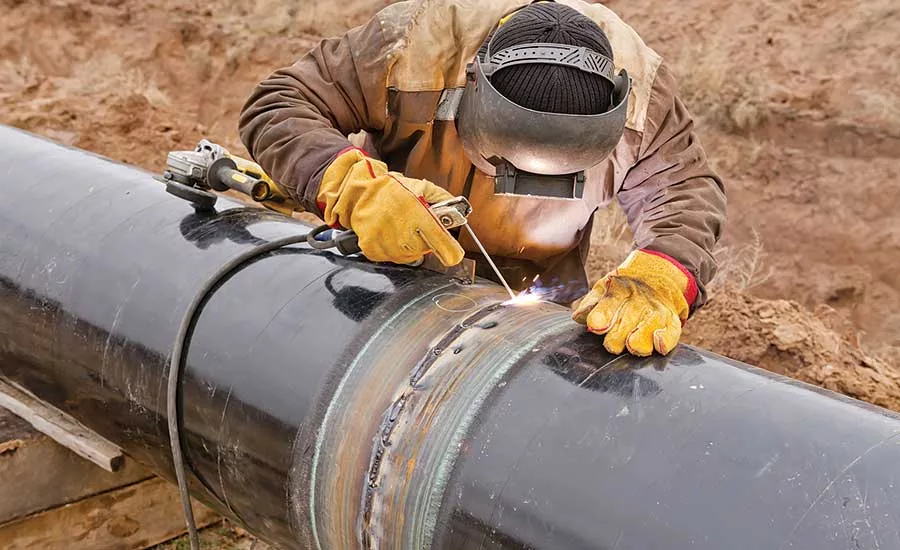Common pipe-joining methods
The piping industry is vast when one considers all the different systems, materials and joining methods that can be used.

Editor’s Note: This is the first in a multi-part series about the Online Piping and Usage Specification (OPUS) resource available from the Mechanical Contractors Association of America (MCAA).
The piping industry is vast when one considers all the different systems, materials and joining methods that can be used. The topic of joining pipe alone is akin to the topic of cooking — both are incredibly broad, both have volumes written about them and neither one can be learned just by reading a book. They both also require practice, and, like golf, only a rare few become truly proficient at either.
So how can you hope to learn about all of the materials and joining methods available for the job at hand?
The Mechanical Contractors Association of America (MCAA) recognized the difficulty in answering this question several years ago and, through the efforts of a volunteer committee consisting of contractor and manufacturer/supplier partners, created the Online Piping & Usage Specification (OPUS) website www.opuspiping.org.
The intent of the OPUS site was not to be a source of “all things piping.” Rather, it was designed to provide a repository of introductory information related to common piping systems, materials, and joining techniques.
Pipe-joining methods
Eighteen piping materials, 25 piping systems and 16 basic joining methods are described on the site in concise detail. However, that listing is over-simplified. For example, one of the joining methods listed is welding. This method alone includes a seemingly endless variety of processes, most of which involve some sort of electric arc as the heat source. All methods require a means of protecting the molten weld puddle from contamination by the atmosphere with the use of a flux or shielding gas, and there are seemingly endless varieties fluxes and shielding gasses used.
OPUS uses 2,764 words in its “brief” description of pipe welding. By comparison, this article is about 800 words long. While 2,764 words may seem like a lot, it is insignificant next to the volumes of codes and standards published by the American Society of Mechanical Engineers (ASME), the American Petroleum Institute (API) and the American Welding Society (AWS). These codes and standards all answer the simple question: “How do you weld pipe?”
Clearly, the question is not so simple, and it relates to just welding pipe. What about flanged and grooved joints? The numerous methods to connect PEX pipe? Press-fit and quick-connect fittings? Soldering and brazing? Solvent welding and heat fusion of plastics, and adhesive bonding for fiberglass reinforced plastic (FRP)? Threaded pipe and joining methods used for drain, waste and vent (DWV) systems? Each of these methods are accompanied by their own codes, standards and/or recommended practices.
The options for materials and joining methods diminish somewhat when a single piping system is considered. For example, residential domestic water supply piping typically consists of copper or some type of plastic pipe, such as PEX. As such, welding is not used to join pipes. If copper is the material selected, the joining methods become more limited, but there are still several options. Copper might be soldered or brazed using fittings designed for such joints. (Of course, there are several types of solder and brazing rod, and most all of them require a flux of some type or another.)
Copper can be joined with press-fit or quick-connect fittings. Though not typical in residential installations, copper pipe, if large enough, can be connected using flanges or grooved joints. Soft copper can be joined without fittings by expanding (swaging) one end to fit over another, and then soldering or brazing is used to complete the joint. It can also be joined using flare-type or compression fittings.
In a typical residential application, more than one joining technique is used. Soldering is very common for joining sections of copper and for connecting fittings, while flare, compression or quick-connect joints are used to connect to plumbing fixtures such as sinks.
Using OPUS
Where to begin? OPUS has proven to be a good source for basic information about many systems, materials, and pipe joining methods. It serves as a good starting point — a solution for information and a “how to find answers” website for questions and critical needs referring to the pipe, valve and fittings (PVF) industry, applications and preferred uses of materials.
Information that is more detailed can be found on manufacturers’ websites and piping and component suppliers’ websites.OPUS provides links to many of these companies, though many more exist. Google is always a good resource, though the best sources of information for joining techniques that must adhere to codes and standards are the codes and standards themselves.
It would be correct in saying that all the readers of this introduction article to pipe-joining methods have been given factual, concise and good/solid general information to start their search for the proper pipe-joining method they need for the desired application and/or specification. Remember, you only need to be wrong one time to really wreak havoc in any piping system.
OPUS is designed to specifically give enough information to answer any questions one may have about their application — or send them to the website of a manufacturer or supplier partner of their choice that can and will assist them with their questions.
Looking for a reprint of this article?
From high-res PDFs to custom plaques, order your copy today!






